-
Safe Travels
Posted on October 31st, 2018 No commentsGlider team has arrived in Mirissa Sri Lanka! Glider is approximately 17 km off shore in 1000m water. There is a scheduled boat trip to recover glider Friday at 6am (Sri Lanka time) at Welligama Bay.
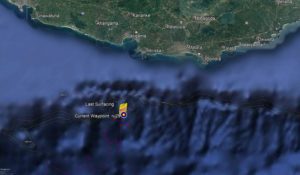
Attached are glider packing test fits for RU29 when it is home bound.
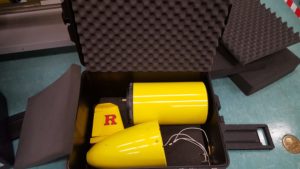
energy bay hull+tail
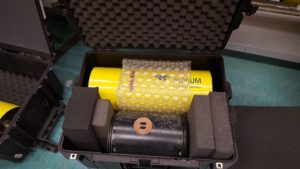
science bay+aft hull
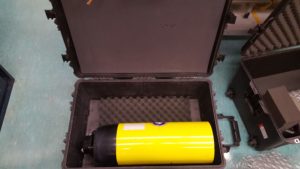
front end
-
RU29 home-bound
Posted on September 23rd, 2018 No comments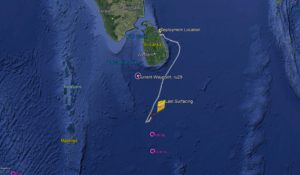
At roughly 120 km away from RAMA array 0N 80.5E RU29 turned back for Sri Lanka after the unfortunate loss of its rudder. With an 800 km journey ahead the glider can be estimate to be back on land in a month and a half if we travel at our safe speed of 20 km per day.
-
Missing Rudder Mystery
Posted on September 20th, 2018 No commentsRU29 ran into trouble today with the loss of his key piloting point. Initial contact increased glider’s buoyancy with a sharp upward pitch and an extreme port roll. Second contact changed glider’s roll to extreme starboard. Team speculates rudder was eventually lost at the end of second encounter at around 100 meters and surfaced with the help of pump and thruster. No large vessels were reported in area that could have interfered, however, fishing activity seems to be the likely culprit. Test dives followed at 10, 60, then 100 meters. Everything is working fine and roll is back to only a few degrees which means we did not lose glider wings.
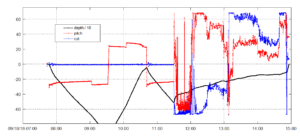
-
One Salty Situation
Posted on September 17th, 2018 No comments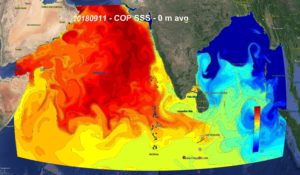
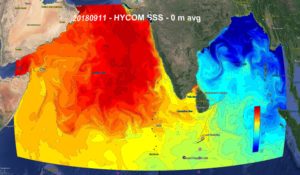
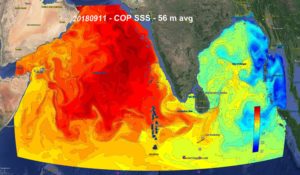
European model Copernicus and US Navy model HYCOM seems to show a high salinity tail coming out from Gulf of Oman/Arabian Sea and slowly drifting around Sri Lanka and into the Bay of Bengal. Salinity exceeds 36 psu and extends to 56m (according to Copernicus). This could cause trouble with glider flight patterns especially deep water profiling.
-
Out with the old in with the new
Posted on September 15th, 2018 No commentsToday RU 29 (finally) made it out of the Sri Lankan maritime border and is on its way to conquer a whirlwind of a situation. Naval ocean model HYCOM and NOAA ocean model RTOFS (depicted in Google Earth overlay figure below) picked up on an eddy spanning over 250 mi in width 400 mi in length that RU29 must cross in order to reach Mauritius off the coast of Africa. The glider may encounter surface velocities measuring from 0 to 0.3 m/s, with the highest velocities propelling the glider on its projected course.
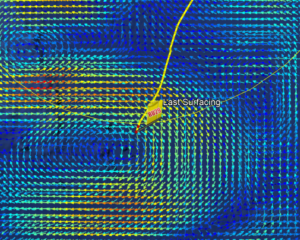
-
Anchors aweigh!
Posted on September 13th, 2018 No comments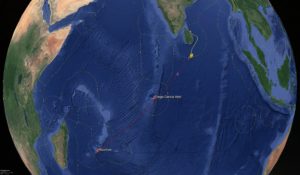
RU 29 has officially left Sri Lanka on August 12, 2018. Operating at a standard safe speed of 20 km per day RU 29 is scheduled to arrive at Mauritius, roughly 4,300 km away, in early March. The glider was granted scientific permission to enter British Indian Ocean Territory and anticipated to come within 50 miles off of the Diego Garcia Atoll. With this mission we will see exactly how well our global forecast models predict the variability in the Indian Ocean and what are the optimal paths for gliders to maximize their forecasting impact among other fascinating scientific discoveries that may occur throughout our journey. Stay tuned.



